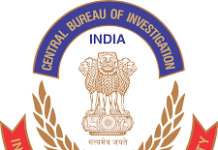
Deposition of silt is a natural process in alluvial rivers.
Rivers pickup, carry and drop silt load as per their regime conditions i.e. discharge in the river, river slope, morphology, nature of silt etc.
However, the accumulation of silt in reservoirs / water bodies leads to reduction of their water storage capacity.
Therefore, periodic surveys to assess their current capacity are primarily undertaken by the owners of water bodies and dam owners who are generally State Governments. Central Water Commission (CWC) has conducted sediment survey of 58 selected reservoirs using hydro-graphic technique and 179 studies of different reservoirs have been conducted through remote sensing technique.
The outcome of these studies have been shared with the concerned State Government / dam owners.
De-siltation of water bodies and dams is primarily the responsibility of owners of water bodies and dam owners.
In order to supplement the efforts of the State Governments, the Department of Water Resources, River Development and Ganga Rejuvenation (DoWR, RD & GR) provides technical and financial assistance to encourage sustainable development and efficient management of water resources through various schemes and programmes such as Repair, Renovation and Restoration (RRR) of water bodies and Dam Rehabilitation and Improvement Project (DRIP).
The RRR of water bodies scheme has multiple objectives like expanding cultivable area under assured irrigation by improvement and restoration of water bodies thereby increasing the tank storage capacity and revival of lost irrigation potential, improving water use efficiency, introduction of sustainable water conservation practices, ground water recharge, increased availability of drinking water, improvement of catchment areas of tank commands etc.
Under the scheme, the Government has provided an amount of Rs 450.79 crore as central assistance to various States since the year 2015-16, which has resulted in the restoration of irrigation potential of 131.46 thousand hectares, including Rs 16.41 crore to the State of Utter Pradesh for restoration of 2.35 thousand hectares of irrigation potential.
Under the World Bank funded DRIP (2012-2021), physical rehabilitation of 223 dams has been completed at a cost of Rs 2,567 crore. This scheme also had provision for need based de-siltation of few reservoirs to restore their lost capacity to the extent possible.
The Government of India is implementing Phase II and Phase III of externally funded scheme DRIP (2021-2031). The scheme has provisions for physical rehabilitation of 736 dams.
The scheme has provisions similar to DRIP Phase-I for carrying out need based de-siltation of selected reservoirs.
The proposed sediment management interventions under the scheme include inter alia catchment area treatment, de-siltation of reservoirs etc.
The Ministry of Jal Shakti has formulated a “National Framework for Sediment Management” for managing sediments in a holistic manner. This framework lays emphasis on sediment management through integrated river basin management plan.
It provides reference of all existing guidelines / policies dealing with the various aspects of sediment management for facilitating the stakeholders, particularly State Governments, in planning strategies and implementation of projects for sediment management in watershed, rivers, reservoirs, lakes/water bodies etc.
CWC has published “Handbook for Assessing and Managing Reservoir Sedimentation” in the year 2019. The main objective of this handbook is to synthesize procedures, methods, technology and practices that are helpful to assess sediment related concerns, and subsequently to manage them considering feasibility and impacts of selected measures.
This information was given by the Minister of State for Jal Shakti, Bishweswar Tudu in a written reply in Lok Sabha on Thursday








